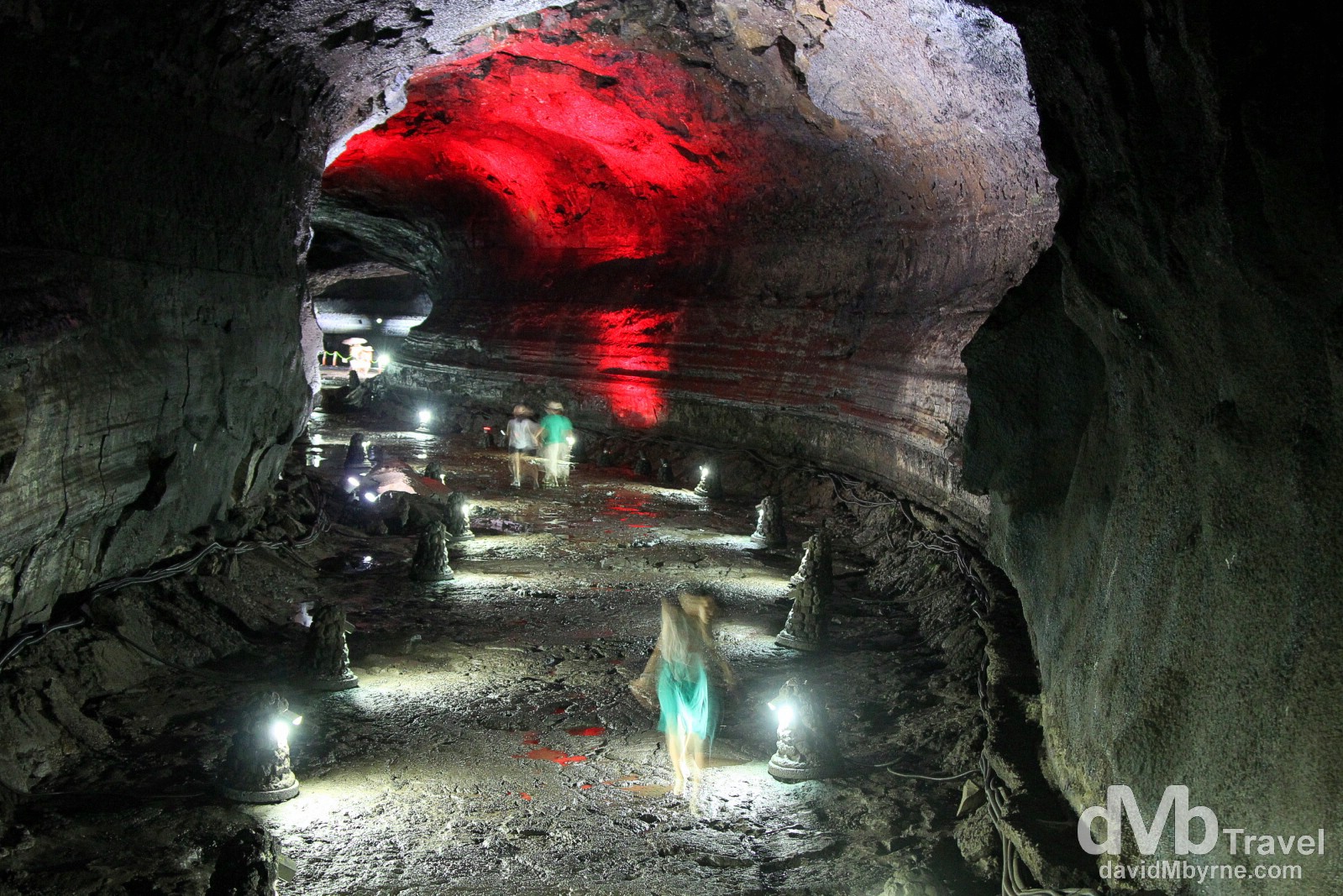Jeju Island is a small volcanic island in the East China Sea off the south coast of the Korean Peninsula. In 2011, & at the end of a 4-year initiative, the island was selected as one of the New7Wonders of Nature, a list voted on by the public through a global internet poll. The island, one of South Korea’s 9 provinces, is known as Korea’s “Honeymoon Island” & the “Korean Hawaii”, complete with palm trees, beaches, & adult theme parks. It also throws up a few volcanic delights, none better than the Manjanggul Lava Tube.

Inside the Manjanggul Lava Tube on Jeju Island (![]() ), South Korea. July 16th 2011 || From a July 2011 visit to Jeju-do (Island), South Korea
), South Korea. July 16th 2011 || From a July 2011 visit to Jeju-do (Island), South Korea
The Manjanggul Lava Tube is 30 metres high at its highest point & 7 kilometres long, only 1 kilometre of which is open to the public. In 2007 it was, along with two other volcanic sites on the island, awarded UNESCO World Heritage status owing to its excellent condition of preservation despite its age – it is estimated to be 300,000 to 200,000 years old. Visiting the tube is a cold (very cold), wet &, sporadic colourful lighting aside, dark experience. But the reward for walking/stumbling that aforementioned 1 kilometre in cold darkness? You get to feast your eyes on a 7.6 metre lava column, the largest known lava column in the world. Ample reward I’d say.
______________________________________________________________________
